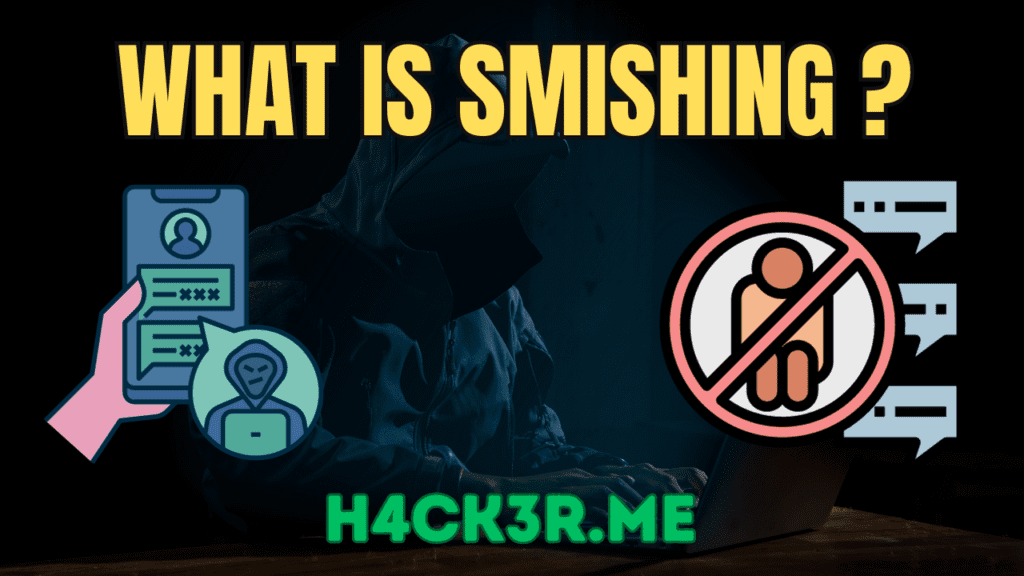
What Is Smishing and Phishing | How to Stay Safe ?
Table of Contents
Introduction
In an increasingly interconnected world, our smartphones have become essential tools for communication, productivity, and leisure. Unfortunately, this convenience has also attracted the attention of cybercriminals who seek to exploit our reliance on mobile devices. One such cyber threat is “smishing,” a deceptive and malicious tactic designed to compromise your personal information and financial security. In this comprehensive blog post, we will delve into the world of smishing, unraveling its origins, methods, and most importantly, how to protect yourself from falling victim to this digital deception.
What Is Smishing?
Defining Smishing
- Begin by providing a clear definition of smishing. Explain that it is a form of phishing that occurs via text messages (SMS) or multimedia messaging (MMS).
The Origins of Smishing
- Explore the origins of smishing, highlighting its evolution as a cybercriminal tactic and its adaptation to exploit mobile device users.
The Mechanics of Smishing
- Describe how smishing attacks work, emphasizing that cybercriminals impersonate legitimate entities or send enticing messages to trick recipients into taking harmful actions.
The Methods of Smishing
Impersonation and Spoofing
- Explain how smishers often impersonate trusted organizations, such as banks, government agencies, or well-known brands, by spoofing their phone numbers or sending messages that appear genuine.
Bait and Manipulation
- Describe common tactics used by smishers, such as creating urgency, offering enticing rewards, or using emotional manipulation to persuade recipients to click on malicious links or provide personal information.
Malware and Malicious Links
- Detail how smishing messages may contain links to malicious websites or download files that can infect mobile devices with malware, compromising their security.
Real-Life Smishing Examples
Phony Banking Alerts
- Provide examples of smishing attacks in which cybercriminals impersonate banks and send fake alerts requesting sensitive information or immediate action.
Fake Prize Notifications
- Share instances of smishing messages promising recipients incredible prizes or gifts in exchange for personal information, preying on their desire for rewards.
COVID-19 Scams
- Discuss how smishers exploited the COVID-19 pandemic by sending messages related to vaccines, testing, or relief funds, attempting to deceive recipients during a crisis.
Mostly cases are from mails and phone number messages, they provide a link which infected
The Risks and Consequences of Smishing
Financial Loss
- Explain that falling victim to a smishing attack can result in financial loss, as cybercriminals may gain access to bank accounts, credit card information, or commit identity theft.
Privacy Invasion
- Discuss how smishing attacks compromise individuals’ privacy by accessing personal information, contacts, and sensitive data stored on mobile devices.
Reputation Damage
- Emphasize that smishing attacks can tarnish an individual’s or organization’s reputation if they are associated with fraudulent messages or scams.
Emotional Impact
- Address the emotional toll that falling victim to a smishing attack can take, including feelings of vulnerability, violation, and mistrust.
Protecting Yourself from Smishing
Verify Message Sources
- Encourage recipients to verify the authenticity of messages by contacting the supposed sender directly through official channels, rather than responding to the message itself.
Use Security Software
- Advocate for the use of reputable mobile security apps that can detect and block smishing attempts, as well as scan for malware.
Educate and Raise Awareness
- Stress the importance of educating family, friends, and colleagues about the risks of smishing and how to recognize suspicious messages.
Be Cautious with Personal Information
- Advise readers to be cautious about sharing personal or financial information via text messages, especially if the request seems unusual or unexpected.
Report Suspicious Messages
- Encourage recipients to report smishing attempts to their mobile service provider, the Federal Trade Commission (FTC), or other relevant authorities.
The Role of Mobile Service Providers
Enhanced Security Measures
- Discuss how mobile service providers are increasingly implementing security measures to detect and block smishing attempts, protecting their customers.
Collaboration with Law Enforcement
- Highlight the collaboration between mobile service providers and law enforcement agencies to track down and apprehend smishers.
Conclusion and Staying Vigilant
In a digital landscape teeming with threats, smishing stands out as a particularly insidious one, preying on our trust and reliance on mobile devices. By understanding what smishing is, recognizing its methods, and staying informed about real-life examples, you are better equipped to protect yourself from falling victim to these deceptive attacks. Remember to remain vigilant, question the authenticity of messages, and educate those around you about the risks of smishing. As technology advances, so do the tactics of cybercriminals, but with knowledge and caution, you can navigate the digital realm safely and securely. Stay alert, stay safe, and together, we can outsmart the smishers.
